Black House Ant
- Article
- Black House Ant
Black House Ants
Scientific Name: Ochetellus glaber
How to identify black house ants
The black house ant, Ochetellus glaber, is a species of ant found in both urban and rural areas in Australia. This ant has a prominent node (petiole), which is a distinguishing feature from the white-footed house ant. They are shiny black and 2.0-3.0 mm long. They prefer sweet foods.

Where are black house ants commonly found?
Black house ants usually nest under stones or dry logs. The species can commonly be found in gardens.
Why are black house ants considered a pest?
Most ant species are not considered to be pests with only a few native and introduced species causing some concern.
Some nest in decaying timber and may be suspected of actually destroying it whereas they will only infest decaying timber. Most foraging workers come from the exterior of premises but it is not particularly uncommon to find nests in roof voids, cavity walls, behind skirting boards, inside motors, inside window screens, under bath tubs, behind tiles in bathrooms and kitchens and behind taps.
In short, they like similar locations to cockroaches and as a result, control methods are very similar. Because of their nesting habits, it is common to find piles of gritty material on the floor or other horizontal surfaces or around door and window frames. On closer inspection, these piles may be found to contain dead ants which have been thrown out of the nest. No matter how often you sweep up the mess, it will re-appear as long as the ants are active.
This habit of making a little mess is not a mammoth problem but ants do become a nuisance when they are spotted walking inside pantries and getting into food containers, trailing along bench tops, window sills, skirting boards, bath tubs and invading shower recesses.
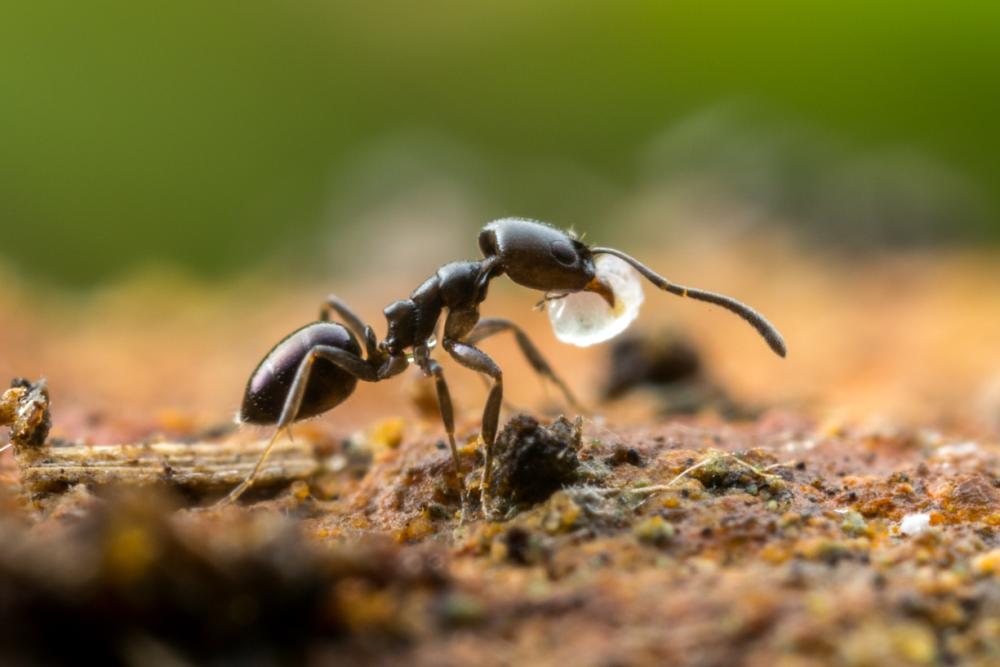
What is the biology and lifecycle of black house ants?
Infesting home and buildings in search of food and water, black house ants are especially attracted to sweet foods but also eat honeydew which is excreted from sap-sucking insects, as a result they are known to tent to aphids and bugs on domestic plants. Black house ants can be aggressive towards other species of ant if disturbed. They are omnivorous, feeding on insects and worms, as well as vegetation, such as small seeds
Management and Treatment Tips for Black House Ant
The effective control of ants depends upon a number of factors including:
-
The particular species involved,
-
The location of the nest site(s) and,
-
The degree of concern they are causing the occupants.
It may be easy to control a colony with a single queen (Camponotus spp), or difficult in the case of species with multiple queens and multiple “homes” and which do not display aggression to workers from other nests (Argentine ants, Odorous house ants and Pharaoh’s ants). That is why correct identification is essential before you begin your campaign.
Ant granules were perfect for the control of some ant species to exterior areas. Most insecticide manufacturers suggest that a two-pronged approach with both baits and liquid sprays be used in order to obtain best results. These manufacturers all supply bulletins with complete instructions on how to use their products. The product labels and these bulletins should all be studied before using any of the materials.
The basic rules for the use of baits are:
-
The basic premise is that bait should hopefully be consumed within 1 to 2 days when their palatability and moisture content are highest. The ants should die within 3 to 4 days.
-
Correct identification – by knowing the species, you can choose the right bait for the job and can also help you find their feeding, trailing and nesting sites.
-
Find the trails – you must place the bait where the ants are otherwise you are wasting time and bait. If the ants aren’t active at the time, you can pre-bait first with non-toxic foodstuffs. This will help you determine where the ants are feeding and what type of food they prefer.
-
Choose the correct bait formulation, they may prefer sweet foods or protein-based materials. Sometimes the same species will change food preferences depending upon seasons or other conditions. Therefore, you need to have a range of baits in your kit bag. If you just put a small blob of each bait in the ant trails, you will very soon find which they prefer.
Some key rules to observe are:
-
Place the bait as close as possible to ant trails which are usually near feeding or nesting sites.
-
Place adequate amounts of bait out to ensure that they will continue to feed until your next visit. By placing the bait in purpose designed “ant cafes,” you will extend the life of the bait.
-
Avoid food competition by asking the client to remove available foodstuffs and liquids.
-
Avoid placing gel baits near sources of heat as the gel matrix may become liquefied and moisture loss may increase. Also, avoid placing them on dry or porous surfaces which may increase water loss and make them less palatable to ants.
-
Some baits lose their potency after only a few days exposure to sunlight. Make sure that you know which they are and replace them as required.
-
Some granulated baits lose their potency around three months after the container has been opened. Make sure that you write on the container the date on which it was opened.
-
A common piece of advice is that you mustn’t place baits on surfaces that have or will be treated with liquid or powder insecticides. Studies carried out by some researchers have indicated that this is not the case and the baits are still palatable. Some pest managers have stated, “Why waste money by applying two formulations?” and that is probably a good rule to live by. You may be able to control the ant problem without the use of insecticidal sprays and dusts but, all manufacturers recommend that bait applications are supplemented by the use of such formulations when treating free standing buildings. These insecticidal barriers will serve to prevent future ant activity to the interior.
The basic rules for the use of residual insecticide sprays are:
-
Non-repellent formulations are considered superior to repellent formulations e.g. synthetic pyrethroids, as the ants will track through the non-repellent insecticide unknowingly. Examples of non-repellent actives and formulations are Bendiocarb (Ficam), Fipronil (Termidor), Indoxacarb (Arilon), Chlorfenapyr (Phantom).
-
The sprays should be applied as a barrier to the base of foundation walls, fence lines and garden beds.
-
Re-application of the sprays may be necessary after rain.
-
Insecticidal dusts should be applied to roof voids where practical.
PRODUCT SOLUTIONS
-
 Imperator Smoke Generator Insecticide135g/kg Permethrin
Imperator Smoke Generator Insecticide135g/kg PermethrinFor the control of ants, flies, silverfish, cockroaches, weevils, spiders, caterpillars and aphids in commercial, industrial, domestic and public service areas, in glasshouses (ornamentals only) and in agricultural buildings including animal housing.
-
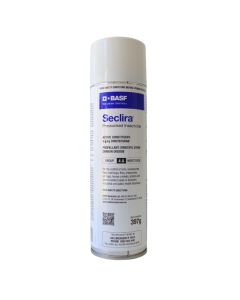 Seclira Pressurised Insecticide 397g5g/kg Dinotefuran
Seclira Pressurised Insecticide 397g5g/kg DinotefuranSeclira Pressurised Insecticide is a fast-acting, non-repellent, ready-to-use product with System III compatibility for the control of a broad range of pests including ants, and cockroaches.
-
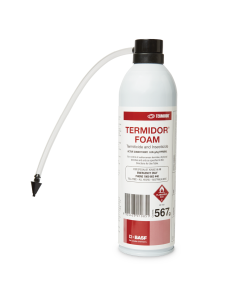 Termidor Foam Termiticide and Insecticide0.05g/kg Fipronil
Termidor Foam Termiticide and Insecticide0.05g/kg FipronilTermidor Foam is a robust dry foam formulation that expands to fill termite nests, galleries and other active workings. Termidor Foam is specifically developed for stage 1 colony elimination with a formulation that maximises the Termidor Transfer Effect.
-
 Maxforce Quantum Liquid Ant Bait (3 x 30g Pack)0.3g/L Imidacloprid
Maxforce Quantum Liquid Ant Bait (3 x 30g Pack)0.3g/L ImidaclopridMaxforce Quantum Liquid Ant Bait is a viscous liquid ant bait containing active ingredient 0.3g/L Imidacloprid. Ants take the bait back to the nest where the active ingredients kills the queen, workers and the rest of the nest.
-
 Coopex Dust Insecticidal Dusting Powder10g/kg Permethrin
Coopex Dust Insecticidal Dusting Powder10g/kg PermethrinCoopex Dust Insecticidal Dusting Powder is registered for the control of cockroaches, ants, fleas, silverfish and bed bugs in and around domestic and industrial premises, food preparation and storage areas. Also for control of mushroom flies in mushroom housing and bees in wall cavities.
-
 Antmaster Liquid Bait0.05g/L Imidacloprid
Antmaster Liquid Bait0.05g/L ImidaclopridAntmaster is a ready to use, sugar-based liquid bait for the control of certain ants. Contains a sweet food source in a low dose bait that is effective against most common pest ants in indoor and outdoor situations.
-
 Biflex Aqua Max Insecticide and Termiticide100g/L Bifenthrin
Biflex Aqua Max Insecticide and Termiticide100g/L BifenthrinBiflex AquaMax is the first ever Professional Strength, multi-insecticide and termiticide. Effective on a wide range of common household pests and all termite species in Australia.
-
 Anthem Insecticide Granules0.5g/kg Fipronil
Anthem Insecticide Granules0.5g/kg FipronilAnthem Insecticide Granule contains 0.5g/kg of Fipronil and is used for the control of Argentine stem weevil, mole crickets and ants in commercial and recreational turf and control of ants in external surrounds of buildings and structures
-
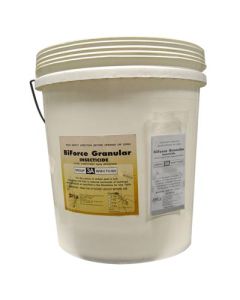 Biforce Granular Insecticide2g/kg Bifenthrin
Biforce Granular Insecticide2g/kg BifenthrinA ready to use contact residual granular insecticide for external control of ants, fleas and ticks in areas such as gardens, lawns, around BBQs and other external surrounds of buildings and structures.
-
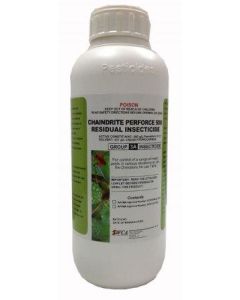 Chaindrite Perforce 500 Residual Insecticide500 g/L Permethrin
Chaindrite Perforce 500 Residual Insecticide500 g/L PermethrinChaindrite Perforce 500 Residual Insecticide is formulated for the control of a broad range of insects in various situations as per the Directions for Use table.
-
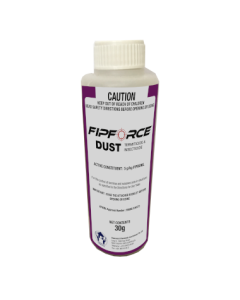 Fipforce Dust Termiticide and Insecticide5g/kg Fipronil
Fipforce Dust Termiticide and Insecticide5g/kg FipronilFipforce Dust Termiticide and Insecticide contains 5g/kg of Fipronil which is toxic to insects by contact or ingestion. FipForce Dust is applied through a hand duster to help in the control of Termites, Nuisance ants and Cockroaches. It has a mineral based carrier which flows extremely well and is less susceptible to moisture than cellulose based dusts. Less moisture build-up means less clogging of the application procedure.
Out of stock -
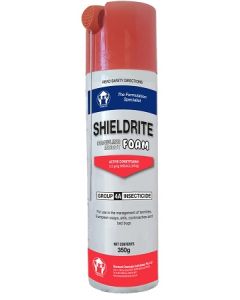 Shieldrite Crawling Insect Foam 350g0.5g/kg Imidacloprid
Shieldrite Crawling Insect Foam 350g0.5g/kg ImidaclopridShieldrite Crawling Insect Foam is a non repellent suspension concentrate formulated into a ready to use foam for the use in the management of pest insects including Termites, European wasps, Ants, Cockroaches and Bed bugs.
-
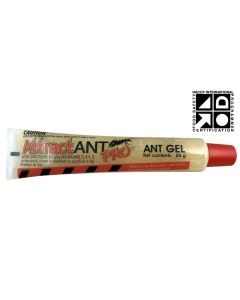 Attractant PRO Ant Gel Bait 50g0.5g/kg Indoxacarb
Attractant PRO Ant Gel Bait 50g0.5g/kg IndoxacarbAttractant PRO Ant Gel is formulated for the control of major pest ants including Argentine ant, Black house ant, Coastal brown ant, Ghost ant, Hairy ant/Crazy ant, Pedicel ant, Pennant ant, Pharaoh’s ant, Red imported fire ant, Sugar ant.
-
 Ensnare Pro 50SC Insecticide 1L50g/L Indoxacarb
Ensnare Pro 50SC Insecticide 1L50g/L IndoxacarbEnsnarePRO is a non-repellent residual suspension concentrate spray. It can be used in conjunction with baits without reducing the performance of the bait. Ants, cockroaches and flies don’t know it’s there. The ‘non-repellent’ properties of this formulation does not interfer with insects natural behaviour...
-
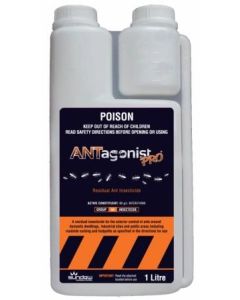 Antagonist Pro Insecticide80g/L Bifenthrin
Antagonist Pro Insecticide80g/L BifenthrinANTagonist PRO insecticide is a suspension concentrate formulation containing a Polymer Enhanced Synthetic Pyrethroid approved for the treatment of ants, spiders, wasps, cockroaches, mosquitoes, midges, fleas, flies, ticks, termites and turf pests including lawn armyworms, sod webworms, argentine stem weevil, billbug, African black beetle, ants and ornamental pest including mites, aphids, caterpillars, loopers, earworm, budworm, light brown apple moth, whitefly, mealybug, thrips and cutworms.
-
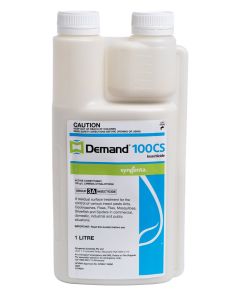 Demand 100CS Insecticide100g/L Lambda-Cyhalothrin
Demand 100CS Insecticide100g/L Lambda-CyhalothrinDemand 100CS is a cost effective and long lasting insecticide for the controls of ants, cockroaches, fleas, flies, mosquitoes, silverfish and spiders for up to up to 12 months indoors and up to 3 months outdoors. It can be applied to foliage for up to 14 weeks of mosquito control.
Out of stock -
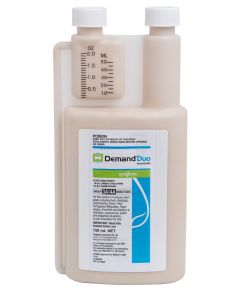 Demand Duo Insecticide 750mL38g/L Lambda-Cyhalothrin, 125g/L Thiamethoxam
Demand Duo Insecticide 750mL38g/L Lambda-Cyhalothrin, 125g/L ThiamethoxamDemand Duo Insecticide is a general pest spray that controls a wide range of pests, simply and effectively. The unique ZC formulation combines a suspension concentrate (SC) of Thiamethoxam and capsule suspension (CS) of Lambda-cyhalothrin. It is registered for the control of pests including ants, bedbugs, cockroaches, fleas, flies, portuguese millipedes, paper wasps, spiders and more.
Out of stock -
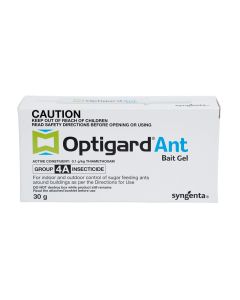 Optigard Ant Bait Gel0.1g/kg Thiamethoxam
Optigard Ant Bait Gel0.1g/kg ThiamethoxamOptigard Ant Bait Gel is an ant gel solution for professional pest controllers looking to deliver long-lasting, effective ant control. Designed for sugar-feeding ants, it not only targets visible infestations but eradicates entire colonies, including hard-to-reach queens. With its powerful formula and versatility, Optigard ensures your clients receive superior results in homes, businesses, schools, hospitals, and food preparation facilities.
-
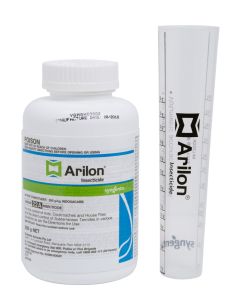 Arilon Insecticide200g/kg Indoxacarb
Arilon Insecticide200g/kg IndoxacarbArilon is a non-repellent insecticide which provides excellent control of ants, cockroaches and other key insect pest species on a variety of interior and exterior surfaces. With its powerful active ingredient and wide-ranging application, Arilon delivers exceptional results against ants, cockroaches, houseflies, and termites—indoors, outdoors, and on various surfaces. Its flexibility and superior efficacy make it indispensable for commercial and domestic pest control programs.
-
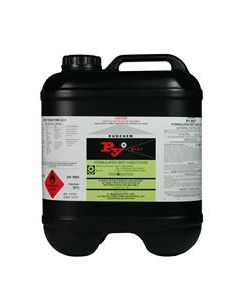 PY Mist Insecticide4g/L Pyrethrins, 12g/L Piperonyl Butoxide
PY Mist Insecticide4g/L Pyrethrins, 12g/L Piperonyl ButoxidePY Mist is a ready to use insecticide for the control of a range of insect pests and is applied using a cold fogger / portable fogging machine.
-
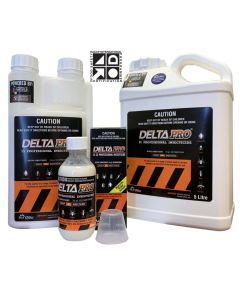 Delta Pro 25SC Professional Insecticide25g/L Deltamethrin
Delta Pro 25SC Professional Insecticide25g/L DeltamethrinFor the control of a range of insect pests such as spiders, cockroaches, flies, ants, mosquitoes in various situations.
-
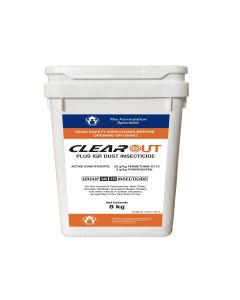 Clear Out Plus IGR Dust Insecticide 8kg Bucket20g/kg Permethrin, 2g/kg Pyriproxyfen
Clear Out Plus IGR Dust Insecticide 8kg Bucket20g/kg Permethrin, 2g/kg PyriproxyfenClearOut Plus IGR Dust Insecticide is a dual active dustable powder containing Permethrin and Pyriproxyfen for the control of adult and juvenile insects. ClearOut Plus IGR Dust Insecticide is formulated as a light, dustable powder featuring two modes of action in one application to provide a quick knockdown combined with a juvenile insect hormone regulator to stop the breeding life cycle.
-
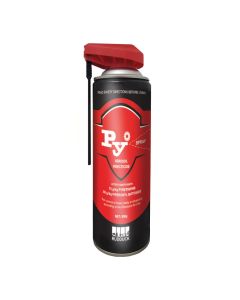 PY Spray Aerosol Insecticide10 g/kg pyrethrin and 50 g/kg piperonyl butoxide
PY Spray Aerosol Insecticide10 g/kg pyrethrin and 50 g/kg piperonyl butoxidePY Spray Aerosol Insecticide is a ready to use professional aerosol for control of a range of insect pests in various situations. Suitable for crack and crevice applications. PY Spray Aerosol Insecticide is an industrial strength spray, suitable for flushing or as a space spray.
-
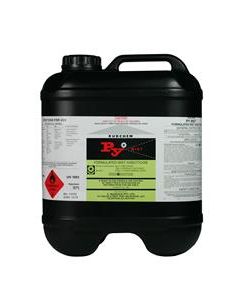 PY Fog Insecticide4g/L Pyrethrins, 12g/L Piperonyl Butoxide
PY Fog Insecticide4g/L Pyrethrins, 12g/L Piperonyl ButoxidePY Fog is a ready to use, broad spectrum insecticide for the control of a range of insect pests in various situations using a thermal fogging machine.
-
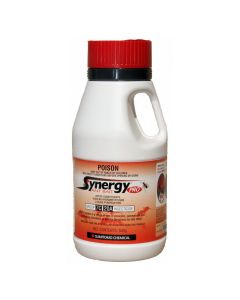 Synergy Pro Ant Bait 500gm3.65g/kg Hydramethylnon, 2.5g/kg Pyriproxyfen
Synergy Pro Ant Bait 500gm3.65g/kg Hydramethylnon, 2.5g/kg PyriproxyfenSynergy Pro Ant Bait 500gm is a granular ant bait registered for the control of a range of ants in domestic, commercial and agricultural situations.
-
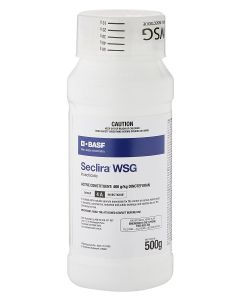 Seclira WSG Insecticide400g/kg Dinotefuran
Seclira WSG Insecticide400g/kg DinotefuranSeclira® WSG insecticide is a non-staining, odourless, broad spectrum, general insect control product for indoor and outdoor use.
-
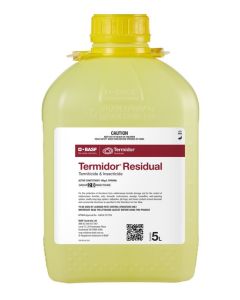 Termidor SC Residual Termiticide100g/L Fipronil
Termidor SC Residual Termiticide100g/L FipronilTermidor SC Residual Termiticide and Insecticide provides superior levels of control across subterranean termites, ants, cockroaches, spiders, and flies.
-
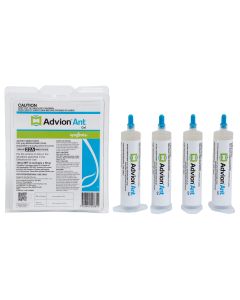 Advion Ant Gel0.5g/kg Indoxacarb
Advion Ant Gel0.5g/kg IndoxacarbAdvion Ant Gel targets most pest species of ants, including all key sweet feeders plus additional ant species. This is a highly attractive ant gel that locks in moisture for extended appeal to ants and uses active ingredient Indoxacarb.
-
 Suspend Flexx Insecticide25g/L Deltamethrin
Suspend Flexx Insecticide25g/L DeltamethrinSuspend Flexx Insecticide is a synthetic pyrethroid (3A) formulation for the knockdown and residual control of a range of insect pests in various indoor and outdoor situations.
-
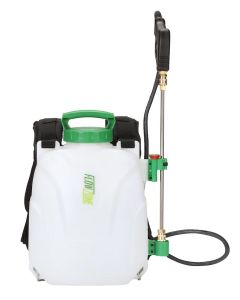 FlowZone 2.5 Storm 10L Variable Speed Battery Backpack SprayerBattery Powered
FlowZone 2.5 Storm 10L Variable Speed Battery Backpack SprayerBattery PoweredElevate your pest control and spraying tasks with the FlowZone 2.5 Storm 10 Litre Variable 5-Speed Battery Backpack Sprayer. Engineered for professional use, this robust sprayer features a 5-position variable speed dial, ensuring precise control for any application. With a powerful 18V/5.2Ah battery, the Storm 2.5 delivers up to 2.5 hours of continuous spraying at pressures up to 60 psi.
-
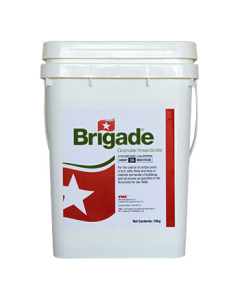 Brigade Granular Insecticide2g/kg Bifenthrin
Brigade Granular Insecticide2g/kg BifenthrinBrigade Granular Insecticide is formulated for the control of certain pests in turf and for control of ants, fleas and ticks in external surrounds of buildings and structures. Permit held for application in potting media for use in container grown ornamentals to control Red Imported Fire Ants for various intervals.
-
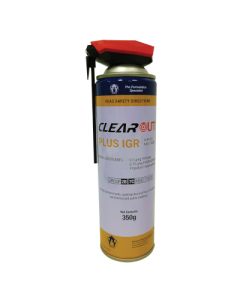 Clear Out Plus IGR Aerosol Insecticide 350g0.5g/kg Fipronil, 0.15g/kg Pyriproxyfen
Clear Out Plus IGR Aerosol Insecticide 350g0.5g/kg Fipronil, 0.15g/kg PyriproxyfenClear Out Plus IGR Aerosol Insecticide is a residual surface crack & crevice or spot treatment for control of ants, cockroaches and flies in domestic, commercial and public buildings.
-
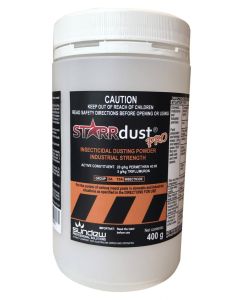 Starrdust PRO One-Shot Insecticidal Dust 400g20g/kg Permethrin, 5g/kg Triflumuron
Starrdust PRO One-Shot Insecticidal Dust 400g20g/kg Permethrin, 5g/kg TriflumuronThe Starrdust PRO One-Shot Insecticidal Dust 400g is an industrial-strength dust designed for use with the Starrdust PRO Duckbill Duster. It is a ready-to-use broad-spectrum insecticide with a unique formulation. It controls a wide range of insect pests including cockroaches, silverfish, spiders, ants, fleas, carpet beetles, bed bugs, European wasps, feral honey bees, bird mites, subterranean termites, hide beetles, millipedes, woodlice and clothes moths.
-
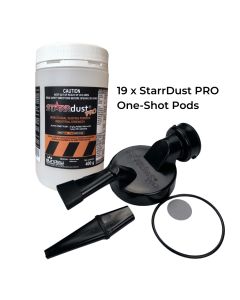 Starrdust PRO One-Shot Insecticidal Dust 19 x 400g + Duckbill20g/kg Permethrin, 5g/kg Triflumuron
Starrdust PRO One-Shot Insecticidal Dust 19 x 400g + Duckbill20g/kg Permethrin, 5g/kg TriflumuronA convenient kit of 19 x Starrdust PRO One-Shot Insecticidal Dust 400g Pods and a bonus Duckbill Duster. StarrDust PRO is an industrial-strength dust designed for use with the Starrdust PRO Duckbill Duster. It is a ready-to-use broad-spectrum insecticide with a unique formulation. It controls a wide range of insect pests including cockroaches, silverfish, spiders, ants, fleas, carpet beetles, bed bugs, European wasps, feral honey bees, bird mites, subterranean termites, hide beetles, millipedes, woodlice and clothes moths.
-
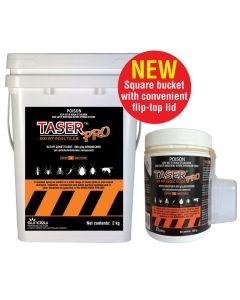 Taser Pro 800 WP Insecticide800g/L Bendiocarb
Taser Pro 800 WP Insecticide800g/L BendiocarbTaser Pro Insecticide is a residual broad spectrum non-repellent spray for the control of a wide range of insect pests in domestic, farm, agricultural, industrial, commercial and public service buildings.
-
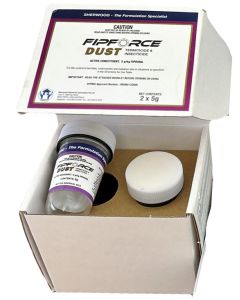 Fipforce Dust Termiticide and Insecticide (Pack of 2 x 5g)5g/kg Fipronil
Fipforce Dust Termiticide and Insecticide (Pack of 2 x 5g)5g/kg FipronilFipforce Dust Termiticide and Insecticide contains 5g/kg of Fipronil which is toxic to insects by contact or ingestion. FipForce Dust is applied through a hand duster to help in the control of Termites, Nuisance ants and Cockroaches. It has a mineral based carrier which flows extremely well and is less susceptible to moisture than cellulose based dusts. Less moisture build-up means less clogging of the application procedure.
-
 Tempo Residual Insecticide 1L25 g/L betacyfluthrin
Tempo Residual Insecticide 1L25 g/L betacyfluthrinTempo Residual Insecticide is a fast-acting, knock-down, broad-spectrum insecticide for general insect control in domestic and commercial situations, as well as for the control of pest insects of turf and ornamental plants.
-
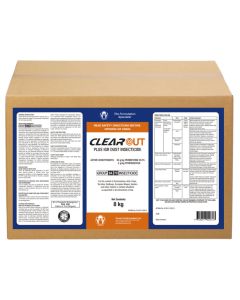 Clear Out Plus IGR Dust Insecticide 8kg Carton20g/kg Permethrin, 2g/kg Pyriproxyfen
Clear Out Plus IGR Dust Insecticide 8kg Carton20g/kg Permethrin, 2g/kg PyriproxyfenClearOut Plus IGR Dust Insecticide is a dual active dustable powder containing Permethrin and Pyriproxyfen for the control of adult and juvenile insects.
-
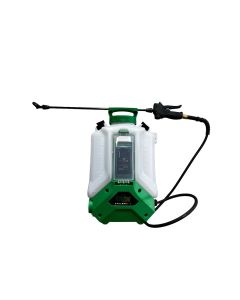 FlowZone Zephyr 15L 2-Speed Battery Backpack SprayerBattery Powered
FlowZone Zephyr 15L 2-Speed Battery Backpack SprayerBattery PoweredThe FlowZone Zephyr is a 15L Battery Backpack Sprayer capable of spraying pressures up to 60 psi with a battery life of up to 2.5 hours from a single charge from the 18v 2.6AH battery.
-
 Killmaster Zero Pest Insecticide Strip 65g
Killmaster Zero Pest Insecticide Strip 65gKillmaster Zero Pest Strip is a highly effective, long-lasting solution for managing a wide range of flying and crawling insect pests, including cockroaches, moths, silverfish, ants, and flies. Designed for non-living areas such as storage spaces, store rooms, and industrial bins, this pest strip provides hassle-free protection for up to 4 months.
Out of stock -
 Clear Out IGR Dust Insecticide Pods (11 Pods x 350g)20g/kg Permethrin, 2g/kg Pyriproxyfen
Clear Out IGR Dust Insecticide Pods (11 Pods x 350g)20g/kg Permethrin, 2g/kg PyriproxyfenClearOut IGR Dust Insecticide Pods bring the proven performance of ClearOut Plus IGR Insecticide Dust into a compact, easy-to-use 350g pod. Designed for professional pest controllers, these pods eliminate the hassle of decanting — simply screw your duster directly onto the pod using the adaptor and start applying.
JOIN OUR NEWSLETTER NOW!
Be the first to hear about the latest specials, products, tips and ideas.

